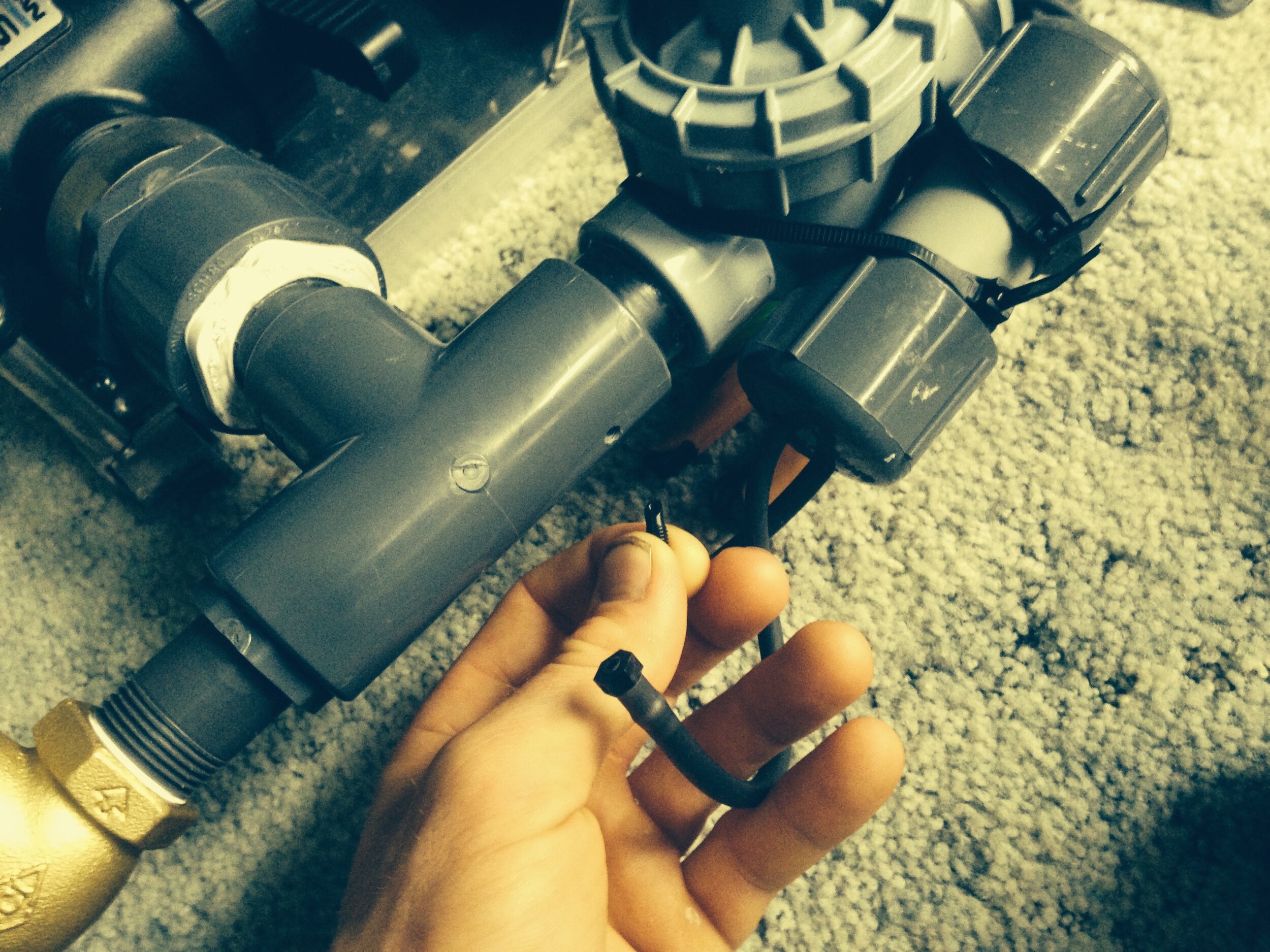
Frequently asked questions
Graywater Systems.

What is Graywater?
Greywater (also spelled Graywater) is water from showers/baths, washing machines and sinks. Water from toilets, clothes washer with diaper wash water, greasy rags, or other chemicals is known as Blackwater and is not legally allowed to be reused. In the state of California wastewater from Kitchen sinks or dishwashers are also considered Blackwater.
What are the benefits of using graywater?
Lower potable water use
Saves energy used to produce and distribute potable water; along with energy saved from the transport and treatment of wastewater
Groundwater recharge
Effective water treatment occurs in the biologically active upper region of the soil
Reduces demand on wastewater treatment plants and septic systems
Allows septic systems to work more efficiently
Connects homeowners or customers to how much water they are using and their product choices
Reliable landscape water source during drought or water shortage
Facilitates local food production;
Returns vital nutrients to soil.
How can graywater be reused?
Greywater can be reused for outdoor irrigation through low tech- gravity fed systems, or high tech- systems including filtration, tanks, pumps and drip irrigation. Greywater can also be reused indoors (example: toilet flushing), though requires filtration and disinfectant and currently is not allowed under California code.
How much water can be saved?
Greywater systems can reduce a household's water use by 10% to 50%. A Greywater system from the laundry machine alone provides an estimated annual savings of 6,400 gallons per household. A common error is to assume that graywater production is equal to water savings. How much potable water-use you actually offset depends a lot on your design, the irrigation efficiency of your system(the % of total water applied that is converted for beneficial irrigation use) and the management of your sites water budget. The efficiency of different systems varies significantly (ie 15%-95% ), and many are installed in conjunction with new additional plantings which increase a sites water requirement resulting in a net 0 savings in water.
Whats in Graywater?
If it goes down the drain it ends up in the graywater. Hair, lint, soap, and cleaning products tending to be alkaline(basic). The water that comes from kitchen sinks is technically considered Blackwater in California (not legally allowed to be reused) though it is more specifically defined as Dark Graywater, and contains food particles, fats and oils that require unique design considerations to be sustainably reused. The high amounts of nutrients and suspended solids and bacteria in graywater rapidly multiply under storage to turn into noxious septic blackwater, which is why graywater is never stored for more than 24 hours. .
Is Graywater hazardous?
There has never been a single documented case of illness from greywater contact or ingestion, though regardless all systems should be designed to avoid the possibility for potential contact with pathogens. Improper designs could create a cross connection where greywater could enter potable water pipes. Potential environmental pollution can result if harmful chemicals in greywater enter the groundwater & surface water. Even naturally occurring nutrients in greywater can contaminate creeks and other surface water by contributing to algae growths that consume oxygen, which is why systems are designed to minimize contact, prevent ponding and runoff and contain graywater onsite.
Is graywater legal?
In practice, grey water legality is virtually never an issue for residential retrofit systems—everyone just bootlegs them. However, grey water legality is almost always an issue for permitted new construction and remodeling, unless you're in a visionary state such as Arizona, New Mexico, Texas (and soon, NV, MT, OR, and CA)
What products should be used?
Cleaning products effect Greywater quality and soil/plant health. Avoid products that contain Salt (sodium compounds), Boron (borate), and Chlorine bleach (hydrogen peroxide bleach okay). Recommended products are Salt/boron/ free. For laundry detergent some brands include Oasis, ECOS, Biopac, and others. For systems with filters its generally preferable to avoid bar soap made with thicker fats that more easily clog filters as opposed to thinner shampoos and liquid soaps.
When NOT to use graywater?
A minimum amount of area is needed to be able to continuously infiltrate the graywater without overflow and runoff occurring (which can cause contamination and is prohibited), and some sites may not have sufficient space to sustainably infiltrate all their graywater. Releasing graywater in close proximity (within 100 ft) to streams, lakes, water wells, or drainage ways may inevitably lead to surface or drinking water contamination and is prohibited. A few sites may have unsuitable soil that is either extremely permeable (potentially contaminating the groundwater) or impermeable (= runoff or ponding). Many buildings that are built on-slab have inaccessible drain pipes that are encased in a concrete slab difficult to modify without substantial demolition.
How do greywater systems work?
There are different designs but most include a collection system to separate graywater from blackwater through what’s referred to as dual-plumbing, a piped distribution system to landscape infiltration areas such as mulch basins or drip-irrigation zones, and a diversion mechanism that allows a way to easily switch the graywater back to a sewer/septic system in case your graywater becomes contaminated (ie. washing hands covered in automotive grease or cleaning toxic paint brushes, etc.) or if seasonally high groundwater levels or precipitation makes it impossible to infiltrate graywater without contamination occurring. The simplest distribution systems are landscape direct, meaning they have no storage or filtration and just passively flow directly into the landscape as the graywater is being produced, while other high-tech systems use a surge tank, pump, filter and/or controller to achieve highly controlled drip irrigation.
Should my Graywater system have a pump or not?
There are different advantages and disadvantages to both pumped systems and non-pumped (gravity fed) systems.
Gravity fed systems are:
Simple and robust
Low maintenance
Relatively inexpensive
No supplemental electricity
Some types of systems don’t require permit
Low water use efficiency (mulch basins)
Best for trees and shrubs
Pumped Systems are:
Higher water use efficiency
(if successfully using drip irrigation)
Able to send water uphill and long distances
Able to distribute to plants, good for large and small plants
Increased cost and complexity
Higher environmental impact from high-tech components
What is the Cost/ Benefit Analysis of Graywater Systems?
More simple designs have a lower initial and operating costs and environmental impact (from embodied energy in manufacturing of materials etc.) but may not offer high levels of irrigation efficiency to offset spending on potable water. More complex designs that use drip irrigation may offset more potable water use/cost but may have operational costs (ie. electricity for pump) and a higher initial financial cost and environmental impact from high-tech components. Are the water savings sufficient to justify the proposed system? The answer is “It depends”, but cost/benefit analysis can also be drastically shifted in certain situations such as
failing septic system
Emergency water shortage
Large volumes of graywater
When is Graywater produced?
The timing and frequency of graywater production is one of its unique qualities that affect system design. Graywater production depends upon habitual human behaviors often difficult to control (ie. a whole family of people all showers in the morning, resulting in a huge surge of greywater in a short time), so having sufficient surge capacity in the system is crucial. Graywaters’ albeit consistent production tends to NOT vary according to changing irrigation requirements (people don’t really produce more greywater in a dry summer than they do in a wet winter), so many greywater-irrigated landscapes require a supplementary make-up water system (usually freshwater), which is a chronic source of redundant overwatering in greywatered areas resulting in unrealized water savings.
